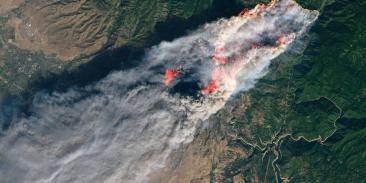World's Largest Lenders Finance Environmental Destruction
Environmental Defense today released three studies documenting the environmental and social damage caused by export finance agencies that support private sector projects in developing countries. The three reports, focusing on Latin America, Africa, and Indonesia, document and analyze more than 150 major export credit agency (ECA) projects and transactions with a total project value of over $65 billion. The reports profile, for the first time, most of the private sector projects supported by ECAs in these regions from 1994 to 1999. The studies can be found below.
ECAs use public money to subsidize private sector exports and investments abroad. Export credit agencies and investment organizations are the world’s largest source of public international finance, dwarfing the World Bank, yet they operate with few, if any, environmental and social standards. The Group of Eight Most Industrialized Nations (G8) have asked ECAs to agree on common environmental guidelines by June 2001, but stall tactics by ECA representatives have resulted in little progress. The representatives will meet again to negotiate guidelines in Paris, December 14-15.
“The ECAs’ lack of minimal standards can turn major infrastructure projects in developing countries into ecological and social time bombs,” said Korinna Horta, Environmental Defense senior economist. “These agencies get away with using tax dollars to fund projects like the Three Gorges Dam in China that other institutions, including the World Bank, wouldn’t touch because of the social and environmental risks.”
“The impact of ECA-funded projects on local communities, human rights and the environment in many countries is devastating,” said Environmental Defense scientist Stephanie Fried. “In Indonesia during the 1990s, ECAs spent billions supporting foreign investments in corruption-plagued mega-projects closely linked to the Suharto family. The heads of industrialized countries have asked for common standards to stop such irresponsible investments of public money, and the ECAs have brazenly dragged their feet in response. The lack of even minimal standards for most export finance is a crime of global proportions.”
With more than 3 million members, Environmental Defense Fund creates transformational solutions to the most serious environmental problems. To do so, EDF links science, economics, law, and innovative private-sector partnerships to turn solutions into action. edf.org
Latest press releases
-
COMING SOON: An effort to weaken our popular chemical safety law
December 8, 2025 -
Groups File Lawsuit Challenging Trump EPA Final Rule That Delays Methane Pollution Protections from Oil and Gas Industry
December 4, 2025 -
New Statewide Survey: As Electricity Demand and Costs Skyrocket, Arizonans Support Building More Wind and Solar Energy
December 4, 2025 -
Trump Administration Announces Plan to Weaken Fuel Economy Standards for Cars and Trucks
December 3, 2025 -
Trump EPA Proposal Lowballs Risk of Cancer-causing Formaldehyde
December 3, 2025 -
New York Finalizes Greenhouse Gas Reporting Requirements for Major Polluters
December 2, 2025










